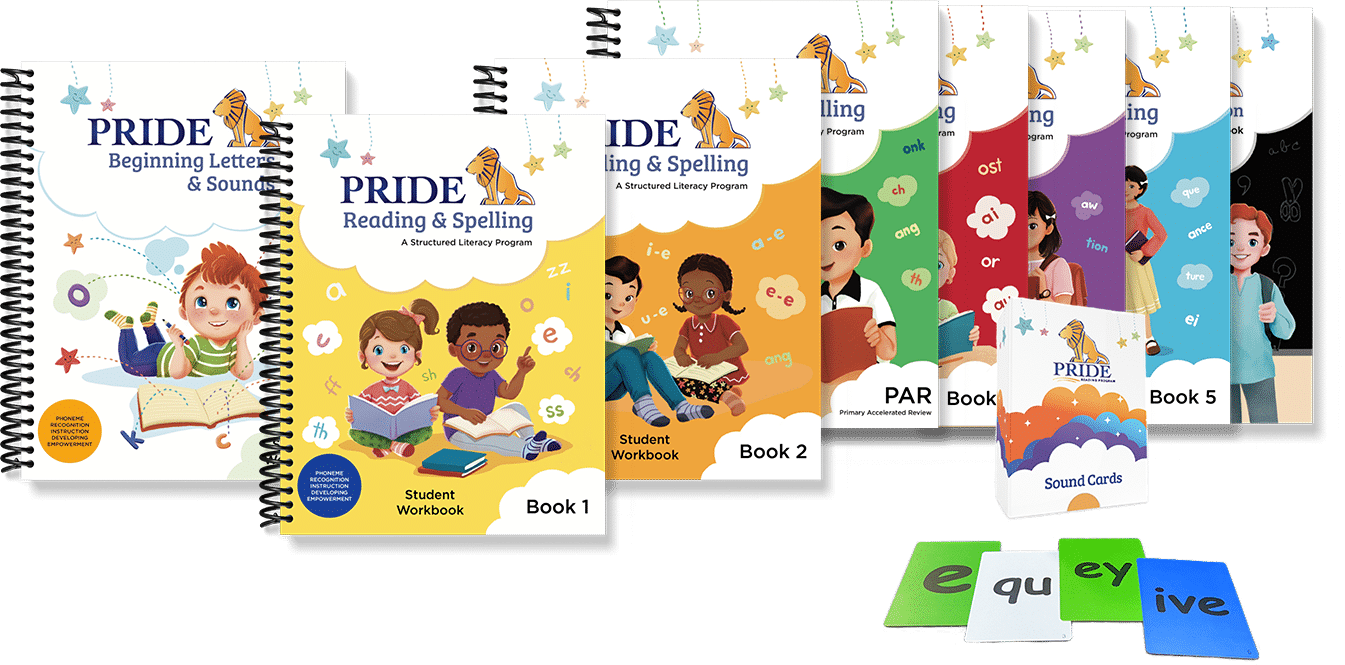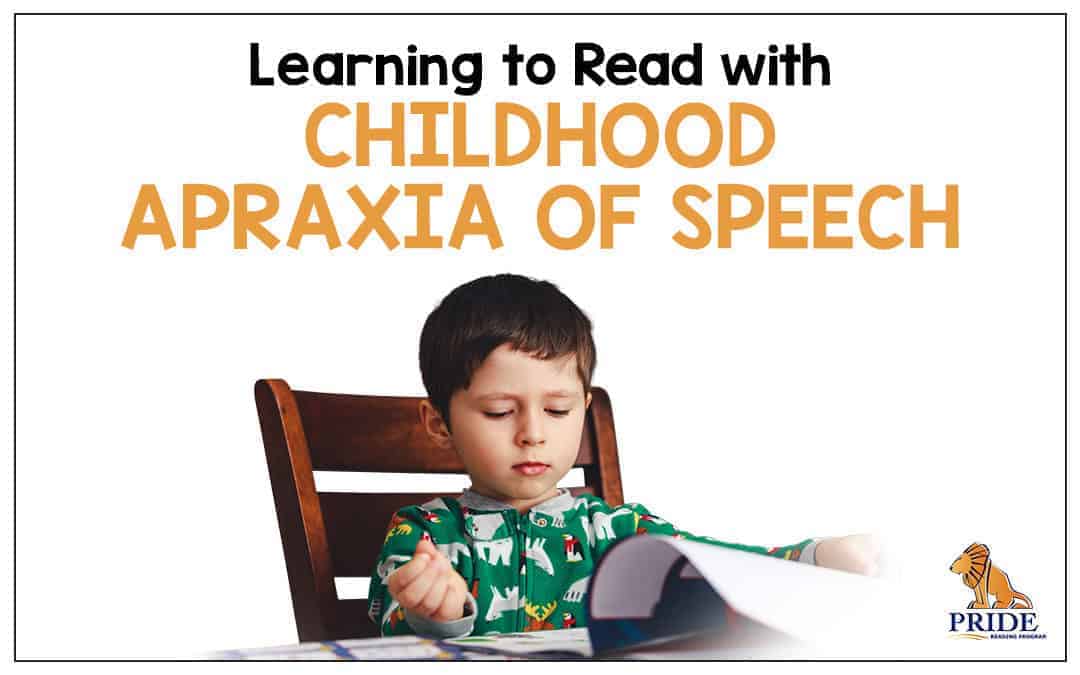Apraxia of Speech is a speech disorder that makes it difficult for children to pronounce syllables and words. Apraxia can affect reading because when a child struggles with saying the sounds, they also struggle with reading the sounds. If you are wondering how to help your child with childhood apraxia of speech learn to read, you have come to the right place. This article will give you all the tips and resources you will need.
How Do You Help a Child with Childhood
Apraxia of Speech Read?
1. Use a Multisensory Approach
You can help your child with CAS learn to read by utilizing multisensory instruction. A multisensory approach uses all the senses to relay information to the child, accessing the auditory, visual, and kinesthetic pathways in order to enhance memory and learning.
When learning a new concept, the child will:
- See it
- Say it
- Hear it
- Touch it
- Move with it
For example, when learning the letter combination “ank” like in the word “bank,” the child might first look at it and then have to trace the letters in the air while speaking out loud.
This combination of listening, looking, and moving around creates a lasting impression for the child as things will connect to each other and become memorable.
If you’d like some more examples, we post lots of quick, easy multisensory activities for you to try out with your child or student on our PRIDE YouTube channel like this one:
2. Use Orton-Gillingham
Because apraxia affects how your child with childhood apraxia of speech processes and produces sound, they will need a different approach to learning to read.
Orton-Gillingham is an approach that helps children with reading difficulties due to dyslexia, auditory processing, speech deficits, and other learning differences.
The Orton-Gillingham approach is a structured, sequential, cumulative, and repetitive phonics-based approach that teaches children the basics of word formation before the whole meaning. It is a multi-sensory, language-based method that uses visual, auditory, and kinesthetic learning modalities to explicitly and directly teach every phoneme in the English language.
Learn more about Orton-Gillingham by reading my previous posts:
3. Strengthen Phonemic Awareness
Before they can begin learning to read, children with childhood apraxia of speech will need intensive instruction in phonemic awareness. Phonemic awareness is when a child identifies the different sounds that make words and associates these sounds with written words. A child cannot learn to read without this skill.
In order to learn to read, children must be aware and able to sound out each of the phonemes in the English language. A phoneme is the smallest functional unit of sound. For example, the word ‘bench’ contains four different phonemes. They are ‘b’ ‘e’ ‘n’ and ‘ch.’
Research clearly shows that phonemic awareness performance is a strong predictor of long-term reading and spelling success for children with speech and language disabilities. In fact, according to the International Reading Association, phonemic awareness abilities in kindergarten (or in that age range) appear to be the best single predictor of successful reading acquisition!
Some examples of phonemic awareness are:
- Identify rhymes – “Tell me all of the words you know that rhyme with the word “bat.”
- Listening for sounds – “Close your eyes as I read some words to you. When you hear the “f” sound, raise your hand.”
- Segmenting sounds – “Say the word tap. What is the first sound you hear? What is the next sound you hear? What is the last sound you hear?”
- Manipulating sounds in words by adding, deleting, or substituting – “In the word hat, change the h to b.” (bat)
Read Repetitive Books
Reading repetitive books is an excellent tool in helping your child with childhood apraxia of speech find their voice. Kids love reading books that are colorful, predictable, and highly repetitive. For kids with apraxia of speech, this repetition is crucial.
Repetitive books really help these kids grasp the content of the story much easier. When children with childhood apraxia of speech have less to think about, they can have fun and relax in the story.
Kids LOVE reading the same books over and over again and that is a really good thing for kids struggling in reading. Every time a child with apraxia of speech reads out loud, they are practicing oral speech sounds.
In Summary
Helping your child with CAS learn to read should include multisensory teaching approaches so that your child sees it, says it, hears it, and moves with it.
Additionally, it is very important to use an Orton-Gillingham program that is structured, sequential, and cumulative.
Lastly, using a lot of phonemic awareness activities like rhyming, blending, substituting, and manipulating sounds will benefit your child tremendously as well as reading repetitive books over and over again.
Please don’t leave without checking out the PRIDE Reading Program. The PRIDE Reading Program is an Orton-Gillingham curriculum that is used by teachers, tutors, and homeschooling parents worldwide with great success.


PRIDE Reading Program is a multisensory Orton-Gillingham reading, writing, and comprehension curriculum that is available worldwide for parents, tutors, teachers, and homeschoolers of struggling readers. The PRIDE curriculum uses research-based best practices to work for students of all ages and various learning modalities, and works for students with numerous learning differences and employs differentiated teaching practices. To learn more, email us at info@pridereadingprogram.com or visit the website at www.pridereadingprogram.com



Suggestions for a student with CAS that has learned and recognizes letter names and phonemes, but still hasn’t conquered the skill of blending the phonemes to make a word. We have been using The Wilson Program and now trying Reading By Design, both based on OG process, but when it comes down to blending the phonemes to say/read a word, it has proved impossible.
Transitioning from knowing the sounds to being able to blend them is a big step! We wrote an article not too long ago about just this topic:
How to Teach Beginning Blending
Give the Pre-Blending activity a try as a way to help your student get the hang of what fluent reading sounds like and to be able to practice blending without having to decode at the same time. We’d love to know if this helps!